Knee problems can stem from a wide range of factors. If you have ruled out any significant trauma or degeneration, this post will make some strong assumptions as to why surfing could be trashing your knees.
If you surf and you do have a knee problem, the first strong assumption is that your trailing leg is the one suffering. So if you’re natural footed, it’s probably your right knee, and if you’re goofy, it’s probably your left knee. If I am wrong, you have good enough reason to stop reading this post.
When we get into a surfing (or skateboarding) stance, the back knee caves inward (medically termed valgus collapse). This is a deliberate technique required for good surfing and not something we want to change, but it does create stress on the inside of the knee since there is less muscular support and greater expectation on the ligaments to take on the job of stabilising your knee. This can lead to knee pain or injury since knee tissue gets more and more degenerated.
When you stand on the board, your hips rotate toward the back foot (i.e natural footers have hips rotated to the right) while the torso rotates toward the front foot. Over time this creates imbalanced loading through the spine, hips, knees, ankles.These factors are significant and the effects accumulate slowly.
There are other factors, apart from the obvious wipe-out or impact forces, which can cause strain on the inside of the knee and therefore pain. These include; lack of lateral hip stability (a weak ass), lack of hip mobility (you’re a yoga hater), lack of ankle stability (feet rolling inward = knee falling inward) and lack of ankle mobility (you can’t squat to save your ass). Restricted mobility above the knee (hip) and below the knee (ankle), means the knee has to compensate to get into your funky surf positions. Soft tissue work to free up tight tissue, mobility work to get more range, stability work to get foundations of strength and strength/power work to become superhuman is all you need to do really!
For a more in depth post on knee issues and DIY rehab techniques, keep reading..
Soft Tissue Work
Muscles, fascia (connective tissue surrounding muscle), tendons (attach muscle to bone) and ligaments (attach bone to bone) start morphing over time in response to the stress you put on them. Tissues can get gnarly due to a lack of mobility and strength (placing unnecessary strain on other tissues), past injury, crappy posture, funky movements (such as squatting with the knees collapsing inward, running with foot pronation, lunging with a hiking hip and trunk lean, etc), eating foods that create inflammation in the body, and repeating the same movements over and over. The tissue above and below the knee joint, with some attaching to the knee itself, can cause the knee to move in suboptimal ways. Unless you have consistent access to a real good physical therapist, there is some work you can get into yourself with the aid of a golf ball, cricket ball, tennis ball or an unloaded barbell. Top areas include;
1. Glutes
Glute stiffness and tightness may be preventing you from being able to move at the hip joint properly, which affects the knee joint. Lie on your back and place a golf ball or tennis ball under the side of your right or left glute. Bend the same side knee and place the foot over the opposite knee. This stretches the glute that you are working on to give it a greater smash. Stay in one area for a few deep breaths and move the ball to another area of tightness around it. Always prod both sides.
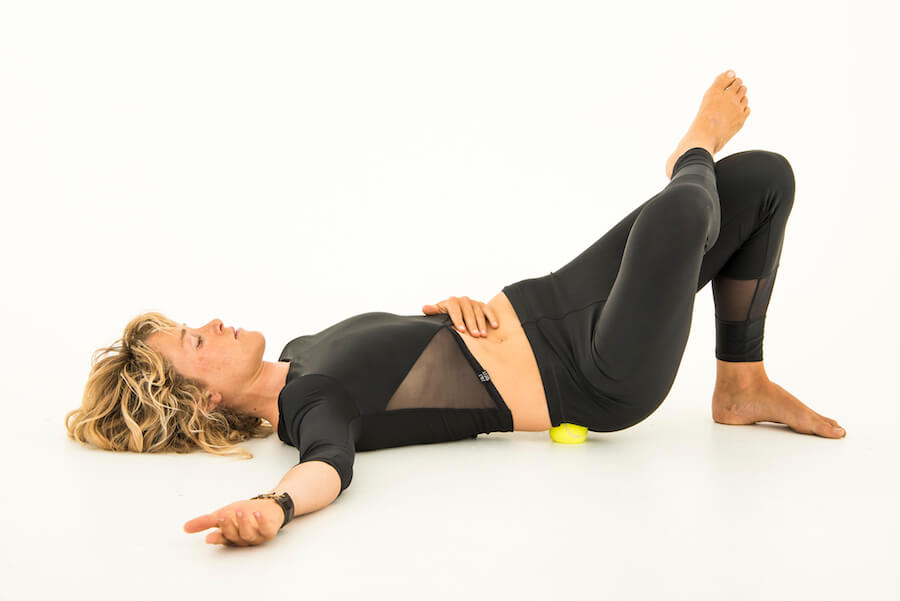
2. TFL (Tensor Fasciae Latae) muscle
This is the muscle that attaches on the side of your hip and inserts into the ITB. If the TFL is tight it can take part in screwing up the ITB, which can pull the kneecap to the side and create pain. Often a big problem and often pretty sore. To hit this one, lie on your side with your knees bent in a foetal position and place a tennis ball, golf ball or cricket ball (depending on your preference of pressure) at the side of the hip on soft tissue.
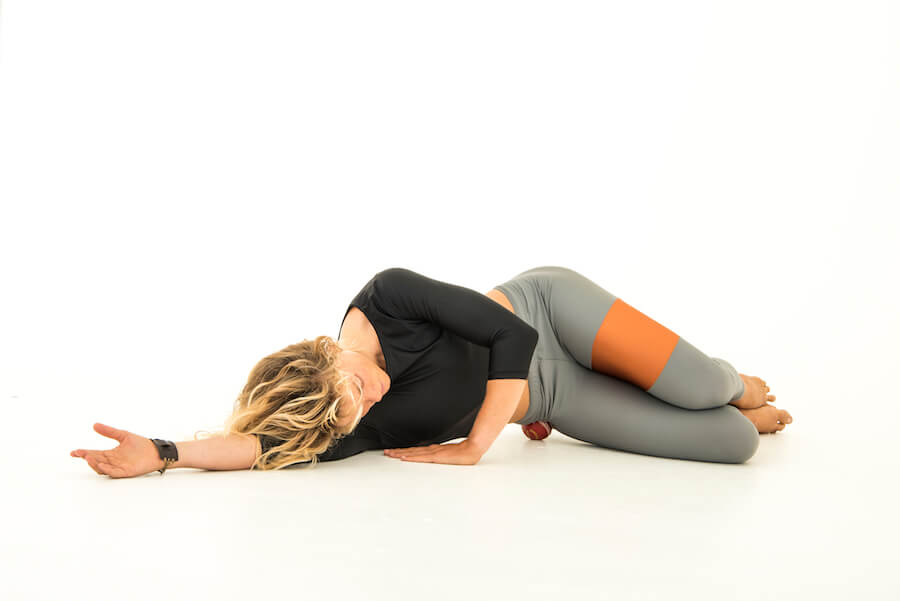
3. ITB (Iliotibial Band) / Outer Quads
Lie on your side and place a tennis ball (or cricket ball if you’re keen) just above the knee. Hold for a few deep breaths, trying to exhale and relax into the pain as much as possible, then move the ball up a little and repeat. You can move the ball all the way up the TFL (as shown in the previous technique).
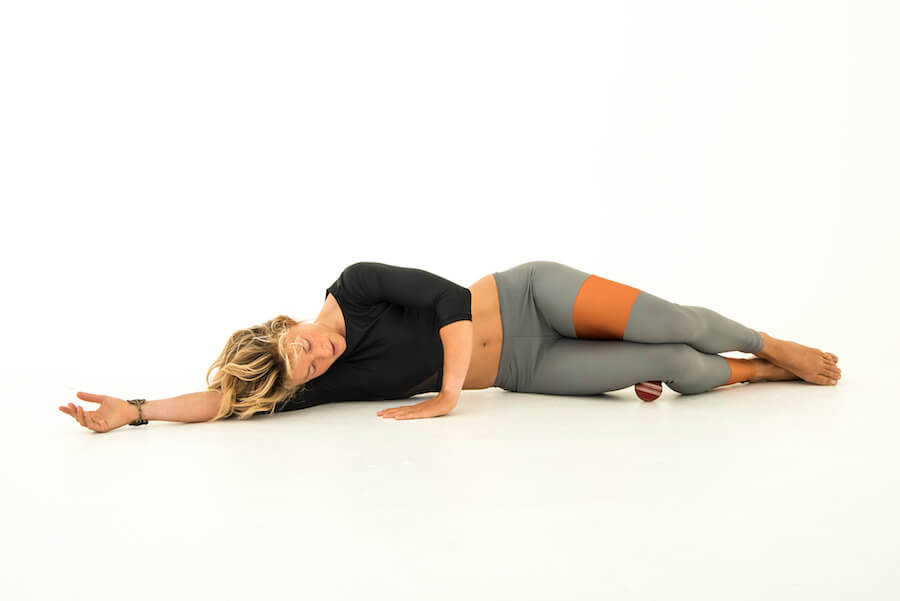
4. Hip Flexors, Quads, Adductors
These can heavily influence the tracking of the kneecap, since they insert just below the joint and some into the patella tendon. For some tissue smashing with a barbell, sit on the floor with your leg extended out and place an unloaded barbell at the top of the knee (not on the kneecap / bone) and work up to the top of the thigh. You can turn your leg inward to work through more of the outer quads and some of the ITB, turn your leg outward to get more of the inner quads and some adductors, or stay neutral to get the middle quads and hip flexors at the top. The pain can be heavy..
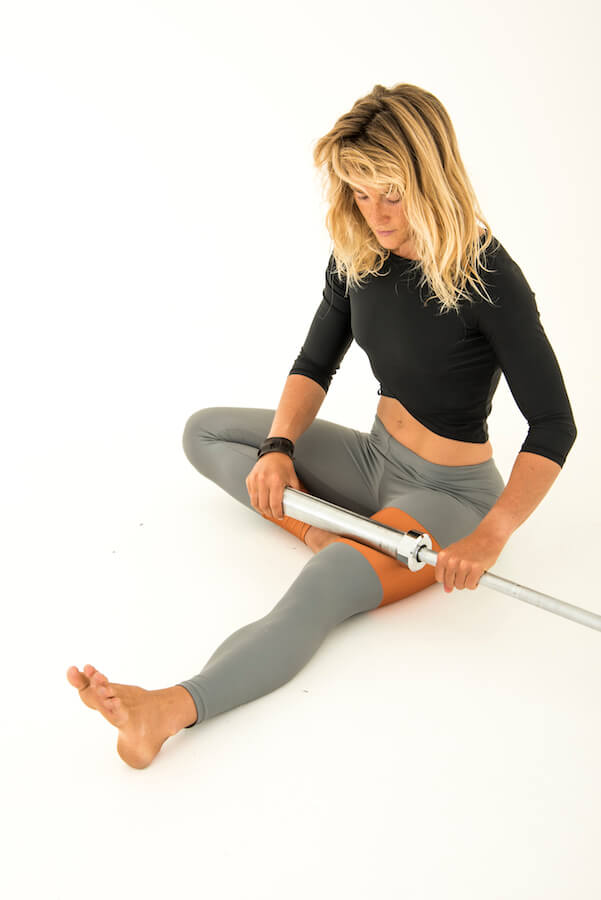
You can also get into your inner thigh muscles, your adductors with a cricket ball. Work from inside the knee to inside the hip.
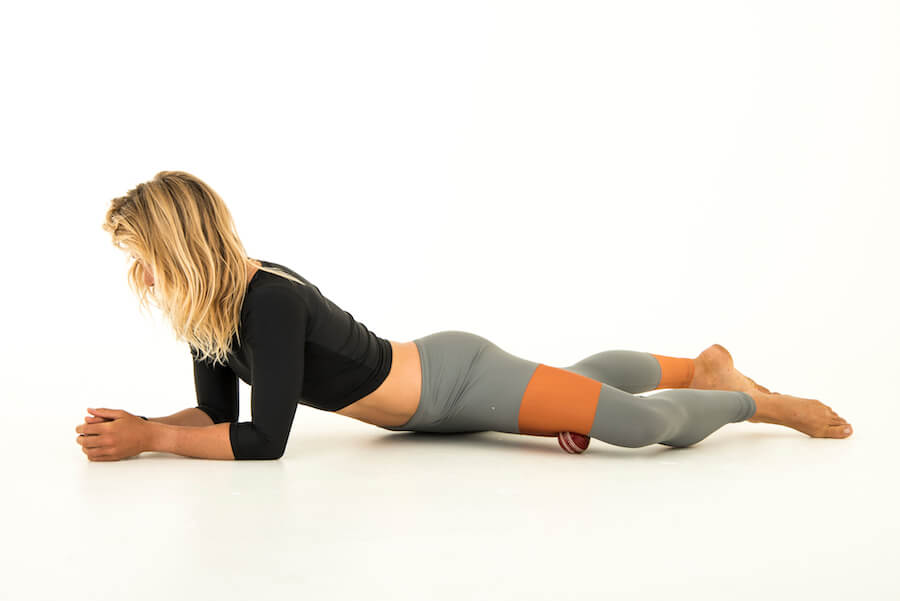
5. Hamstrings
Poor hamstring mobility is often a major block to getting enough hip flexion to squat down without having your back rounding out like some sort of primal animal. Tight hammies can also pull at the knee joint where they insert. You can place a golf, tennis or cricket ball under your thigh while sitting at the edge of a bench. Move the ball from the back of your lower thigh to the back of your upper thigh, extending and flexing your knee at each level.
6. Calves
Loyal gastroc and soleus.. Most people don’t go to a masseuse to get their calves kneaded, but these are so heavily stressed everyday that you either laugh or cry when you get deep into these. Again, with their insertions, they can influence the mechanics of the knee. My favourite technique for the calves is kneeling on the floor and placing a golf, tennis or cricket (the worst) ball sandwiched between your thigh and shin bone so that your calves get a good smash from the pressure of your own bodyweight. Work the ball from the top of the calf (near the knee joint) to the bottom (on the Achilles tendon) and up again. If you find the ball keeps falling out, place an empty glad-wrap roll or thin PVC pipe horizontally across your calves and gently sit back onto it.
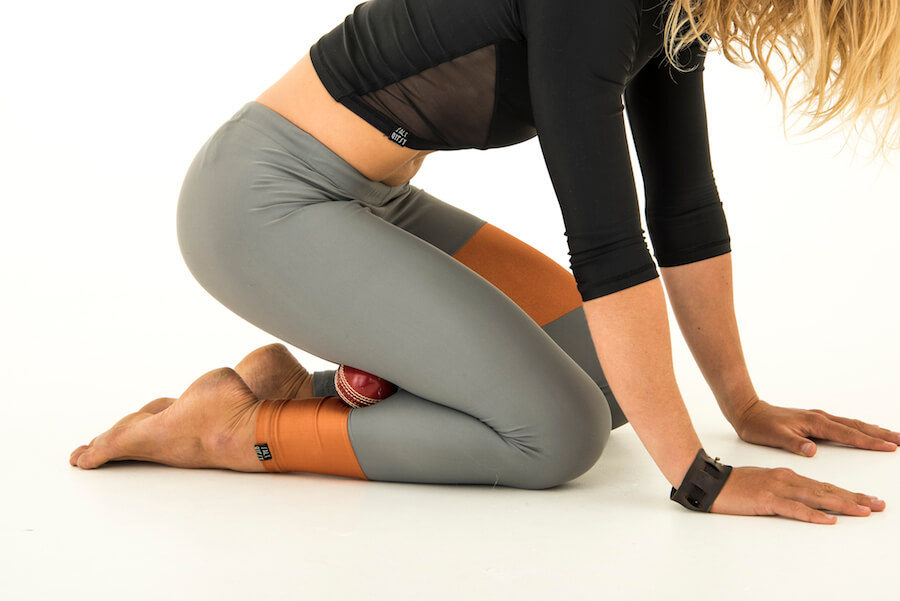
7. Foot
Tight and stuck tissue under the feet can affect the way your ankles move. How your ankles move affects how your knees move. How your knees move affect how your hips move. How your hips move affect how your spine, shoulders and neck move. Your feet most likely never get any attention, so give them a bit of love. To get more specific with pressure (than possible with a tennis ball), you can also use a golf ball.
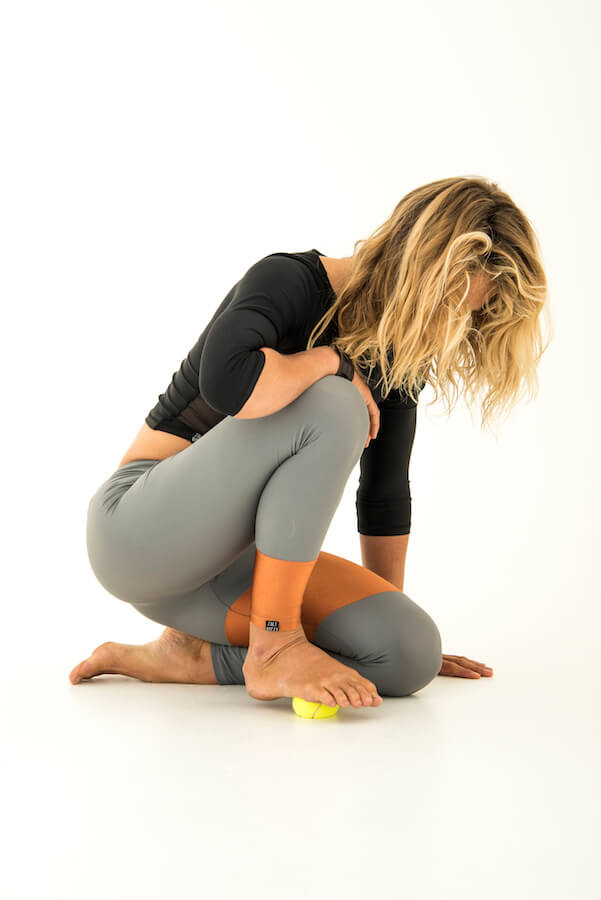
Hip Mobility and Ankle Mobility
If you have dodgey range in the hip and ankle, you’re likely to do dodgey things at the knee to compensate for the lack of movement above and below. This could be something like caving your knee inward to compensate for an ankle that wants to cave in all the time since it can’t bend properly. Knees collapsing inward when squatting, jumping, running, lungeing and stepping can overstretch the medial structures of the knee (such as the MCL) and cause pain. Add some heavy load to a knee that caves in and you have a recipe for ligament tears. This is why you’ll often hear trainers or coaches obsess over keeping the knees out and over the toes.
Inadequate ankle mobility along with tight calves prevents the knee from moving forward over the toes enough. This causes the foot to compensate by collapsing in, or pronating (allowing for more forward knee migration). When the foot pronates, the tibia internally rotates, which leads to hip internal rotation and hip adduction, and therefore the knee caves in (also called Knee Valgus).
Hip / Glute and Hamstring Strength
Inadequate glute/hip strength (which are good at extending, abducting and externally rotating the hip), possibly in conjunction with overactive hip adductors, prevents proper stabilization of the femur. The hips then move into adduction and internal rotation, or you start squatting like you badly need to use the toilet.
Strengthening your glutes also gives you a rounder, perkier, harder butt which has many side benefits.
If you have knee problems, start with the soft tissue above and then work you way onto strengthening your glutes and hamstrings and proper knee alignment when squatting. This means squatting with your knees tracking over your second and third toes, reducing unnecessary strain on your knee joint. For more information and further techniques, visit Fluid Surfer The Book. You can also find all of these techniques taught in video format at Surf Strength & Conditioning.